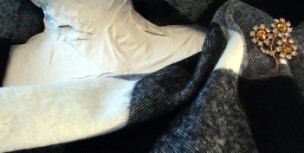.gif)
.gif)
When we first looked at the viability of our website. We decided to sell vintage jewellery as well as
vintage buttons under our superb and exclusive vintage accessories collection.
In the first instance the small number of vintage buttons we listed sold well, especially the metal buttons and children's buttons. So in the last few months, during our buying, we sourced more second-hand buttons including several large tins and many smaller quantities.
In the last few weeks, with the growing numbers of buttons, I decided to sort and get ready for sale.
No machinery available, it has all been by hand. So most nights whilst watching TV outcome the tins, etc and I have sorted by hand. My hubby and daughter have helped of sorts also.
Each tin sorted gives you an insight into the person who first made up the tin. It could be a family tin with someone who did a lot of sewing or knitting for children. Or a tin with a family that were wearing overalls and shirts - full of functional buttons. The one tin that I found fascinating was the family that were wearing military uniforms.
It was once the norm to collect buttons. Every family had a tin. In the early twentieth century, all buttons were cut off for reuse before the children took the rags to the rag man in exchange for a goldfish. Spare buttons that were sewn onto the label, went into the tin. Any buttons for recycling also went into the tin. Grandma's button tins were common. But not so today
But have you noticed that the spare button is no longer on the label or on the washing instruction label anymore of most new clothes? So if you lose a button nowadays, there is no spare!!
Anyway, I digress, what I find also fascinating is the other items in these tins. Nails, screws, pins, safety pins, bits of unidentifiable metal, coins, chalk, beads, bits of broken jewellery, etc
Soon the coffee table, the sorting starts per tin. Buttons into colours and other useful bits into piles.
Then each pile of coloured buttons are cleaned. Then each colour is then sorted into size and matched. Matching buttons are bagged ready for photographing and listing on Jewels and Finery. Bit of an art this. As the unmatched buttons are compared with the growing bags of buttons already, sorted & washed also.
With the number of buttons that I have brought, I now find that I am able to match more buttons up. They have come from different sources and singular are not so easy to use but with 2, 3 or more are now of greater use.
The sorting, cleaning and matching are time-consuming, but with a glass of wine and the television on, it is quite therapeutic. Anyway, I am so slow at anything these days. The sorting is quite an achievement. We now have over 100 button bags ready for sale, and soon there will be many more.
Most of the buttons were intended for reuse in sewing, jewellery making and haberdashery projects and recycled to go on clothing. I have always been before anyone else. When it was not fashionable to grow your own, I did. When recycling was not fashionable I did. So this to me is a natural progression. More people will catch up with my way of thinking in the next year or so. So to me, it is common sense to start collecting and buying a large number of buttons now.
However, I have found many beautiful buttons, metal, plastic, rubber and nice sparkling ones. I am not an expert on collectable buttons but I think that I have some and the number is growing. So I have been learning and reading. Will join the UK button society for more information. I personally do not think you can be enthusiastic about the products that you sell if you are not interested and do not learn as much as possible.
Anyway now have to get the bags of buttons photographed. Then listed on the website
Next week the vintage beads need sorting...

 pieces that were evident at the Clothes Show. What better way to spend those freezing, wet dark evenings but making your own clothes or jewellery.
pieces that were evident at the Clothes Show. What better way to spend those freezing, wet dark evenings but making your own clothes or jewellery.
.gif)


.gif)
.gif)






